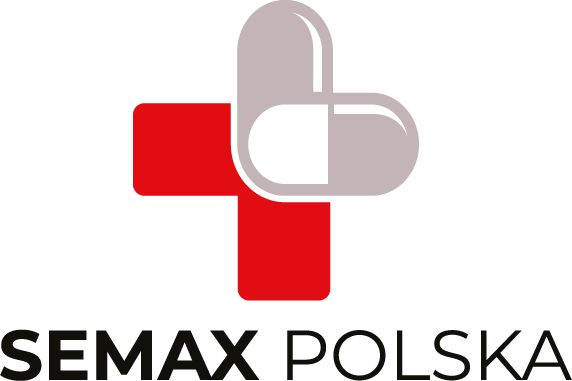Your loved one has just undergone a stroke. Nothing is certain yet, but are you worried that he will be affected by lifelong disability? Statistics say that 40% Poles die within the first month after undergoing a stroke. Is there a post-stroke prevention that will bring relief to the patient? Find out now how to prevent the negative effects of an ischemic stroke.
What happens to our body during a stroke?
During a stroke, blood flow to the brain is suddenly interrupted, leading to ischemia (lack of sufficient oxygen and nutrients) in specific areas of the brain. This is a serious condition that can have lamentable consequences for health and life.
Table of contents
- What can a person do after a stroke to regain physical and mental fitness?
- Physical rehabilitation
- Wise and planned diet
- Support from loved ones
- Alternative forms of stroke control
- BPC 157 - a peptide that facilitates recovery from stroke
- How to dose the peptide after a stroke?
The main causes of stroke are:
- Thrombosis - as a result of a clot (blood clot) inside a blood vessel that blocks blood flow.
- Embolism - the blockage of a blood vessel by a foreign object, such as a piece of tissue or a thrombus that moves from elsewhere in the body.
In response to a stroke, the body responds with various defense mechanisms, but the effectiveness of these responses can be limited. The main changes in the body during a stroke are:
- Ischemic area - the brain needs a constant supply of oxygen and glucose to function normally. Ischemia leads to damage to neurons and other brain cells in the affected areas.
- Inflammation - in response to damage, the immune system activates the inflammatory process in the damaged areas of the brain, which can further aggravate the patient's condition.
- Cerebral edema - tissue damage can lead to cerebral edema, which increases intracranial pressure and can be life-threatening.
- Neurological disorders - depending on the area of the brain affected by the stroke, the patient may experience various neurological disorders, such as paresis, loss of sensation, speech disorders, vision problems, etc.
Prompt medical response to a stroke is key to minimizing brain damage and improving the chances of recovery. Early treatment can significantly improve a patient's prognosis and reduce the risk of complications.
What can a person do after a stroke to regain physical and mental fitness?
The greatest difficulty for people after a stroke is full recovery. It is important to provide such people with adequate care as soon as possible - as soon as possible. As previously mentioned, after a stroke 40% Poles do not live past the first month. Therefore, it is necessary to implement an appropriate rehabilitation program very quickly, so as not to expose the post-stroke patient to a second stay in the hospital.
Physical rehabilitation
Only, one in three people goes to rehabilitation after a stroke. And it is a necessary factor for recovery. A post-stroke patient should not be allowed to lie idle in bed. Those who end up in a stroke unit have an easier task - because they can start post-stroke rehabilitation almost immediately. If you don't end up in such a facility, you should get a referral to a physiotherapist who will perform treatments on the National Health Service, or you can opt for private treatments.
The most important function of neurological rehabilitation is to restore to the maximum extent the functions lost as a result of brain ischemia. If for some reason, full recovery is not possible, then rehabilitation exercises are performed to improve quality of life and allow one to function with, for example, one paralyzed arm.
Wise and planned diet
A stroke does not come out of nowhere. To cause it, several specific criteria must be met like:
- chronic inflammation,
- overweight,
- smoking,
- low physical activity.
This makes diet a factor in recovery. There is no one-size-fits-all method of nutrition. Patients are advised to choose their diet individually, taking into account their specific needs.
A different diet should be followed by people with diabetes, another by people with lipid disorders, and yet another by overweight people. In order to determine the right nutrition profile, which will be perfectly tailored to your needs, it is recommended to visit a specialist, such as nutritionist Jakub Puchalski -. https://puchalskidietetyk.pl/. Meeting with an experienced nutritionist will allow you to approach the problem holistically and take into account all your needs.
In addition, the patient should avoid tobacco smoke and alcohol consumption as much as possible during this particularly difficult and decisive time, as this can cause a secondary stroke, which can have lamentable consequences.
Support from loved ones
The simplest solution - and so often overlooked. After experiencing numerous motor dysfunctions, but also mental dysfunctions, people after a hemorrhagic stroke have a hard time adjusting to a new reality. A large proportion of post-stroke patients do not fully recover, which involves providing care for such a person. In this case, aggression or depressive states can often occur on the part of the patient. Therefore, the motivation and support of loved ones is extremely valuable in the recovery process.
Alternative forms of stroke control
In addition to proper diet and rehabilitation, there are other, less common methods that can be used to speed up recovery. These include music therapy, acupuncture, tai-chi or peptides - learn more about the effects, innovative substance bpc 157.
BPC 157 - a peptide that facilitates recovery from stroke
The bpc 157 peptide is a 15 amino acid that can be extracted from human gastric juice. Why would a substance found in gastric juice help in any way to minimize the negative effects of a stroke? According to the study, the peptide provides benefits to the brain and nervous system. It has been meticulously tested on rats and mice, and the effects have yielded satisfactory results.
One of the biggest advantages of the product is attributed to its ability to alter certain genes in the body, reacting with nitric oxide. This enables faster recovery of muscles and joints, which is extremely important in post-stroke rehabilitation.
Animal experiments have also shown that post-stroke rats taking the BPC 157 10 mg had repaired damage to neurons in the brain - that is, cells that are responsible for sending information in the brain.
How to dose the peptide after a stroke?
According to the available recommendations, substances should be taken in appropriate doses:
- post-stroke: 500 mg daily,
- prophylactically: 250 mg daily.
Action bpc 157 at this point has not shown any adverse effects, and the substance itself is well tolerated by the human body. Experts advise that the preparation should not be taken in tablet form of acetate due to its rapid digestion and low stability in the acidic environment of the stomach. More stable tablet forms will work, but it will be at a much higher cost than, for example, bpc 157 given by spray or injection.




